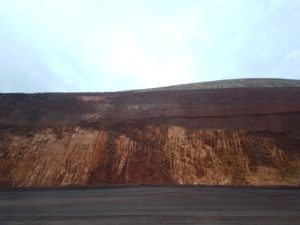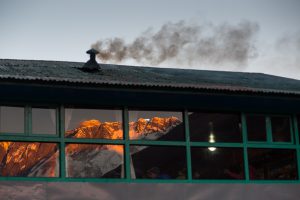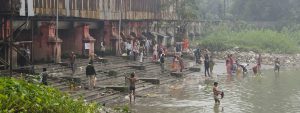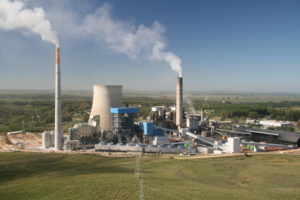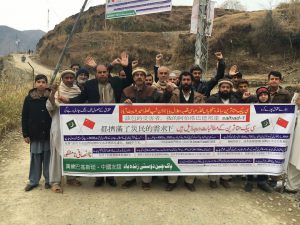When the Indian government first started to seriously explore inland waterways in 2004, the share of transport travelling through on water was “a paltry 0.15%”. This compared to 20% in Germany and over 32% in Bangladesh. Both in developed countries and in its neighbourhood India seemed to lag behind.
The possibilities of inland water transport (IWT) are manifold. According to a 2014 report prepared by RITES Ltd for the Inland Waterways Authority of India (IWAI), these are:
- Cost savings:
- 1 HP moves 150 kg on road, 500 kg on rail and 4,000 kg on water
- 1 litre of fuel moves 24 t‐km on road, 85 on rail and 105 on IWT
- Cost of developing waterways much lower than rail and road
- Reduces transportation losses
- Environment friendly:
- Least fuel consumption per tonne‐km
- Carbon dioxide emission is 50% of trucks
- Negligible land requirement
- Safe mode for hazardous and over dimensional cargo
- Supplementary mode:
- Reduces pressure on road and rail
- Reduces congestion and accidents on road
The IWAI and India are not the only ones, pushing for this change. In 2009 a World Bank study had similar things to say about a transport transformation to the use of inland waterways in China, which had already embraced a plan to deepen the use of its waterways in 2007. In Vietnam, the transformation of transport in the rice supply chain was projected to considerably reduce the amount of carbon emissions in the country.
Despite these large and beneficial aspects of the use of inland waterways, the usage had only increased to 0.5% by 2016, according to an FAQ released by IWAI. The question is whether it will expand much further. According to a detailed report put out by the Manthan Adhyayan Kendra and Society for Rural Urban and Tribal Initiative (SRUTI), there is a great deal to doubt whether this transformation either will, or should, happen.
Estimation of costs
While the estimates of riverine transport on a kilometre by kilometre basis may seem superficially cheap compared to other forms of transport, there are three main differences when it comes to how freight moves on land versus on water. The first is that a road travels straight while rivers bend and curve, therefore the difference between freight costs estimated at INR 1.06 (USD 0.0165) per tonne per kilometre (T/km) by water is not that different from the cost of railways, which is INR 1.41 (USD 0.0219) T/km. Even the cost of freight by road at INR 2.58 (USD 0.0401) is not that spectacularly different, especially when you consider the second factor that adds to the cost of transport by a significant amount: the cost of loading and unloading freight.

Another aspect that raises costs is that travel by river is much slower than by rail or road, and therefore there is an opportunity cost of the time spent.
Where is the water?
The other problem with IWT in South Asia is that a river needs enough depth throughout the year for it to be a viable inland waterway. Yet, in their natural state, many Indian rivers simply do not have that level of water. This means that extensive dredging will be required to make the rivers navigable. As Nachiket Kelkar writes on the South Asia Network on Dams, Rivers and People blog, this dredging will have a tremendous impact on the ecology of the rivers. Species like the blind Gangetic dolphin (Platanista gangetica gangetica), which navigates by echolocation, already endangered, may be wiped out.
Moreover, the water in rivers have competing demands, including dams and farming. To maintain the water levels in the river to the degree needed for them to function as inland waterways, the water use for these activities will be curtailed. Dredging may also impact aquifers along the river, damaging the ability of water to percolate underground. On top of all this, the removal of riverbed material in creeks or rivers near the sea may allow the ingress of saline water, damaging the ecosystem in the region.
These challenges are regional in nature. The Ganga has a high silt content as it flows through Bihar, and the state government is concerned about dams and water flow. Kerala, with the sea nearby, fears the ingress of salt water. As water is an issue that is managed by Indian states rather than the Centre, the work necessary to manage waterways will need extensive Centre-state cooperation, and will have to respect local sensitivities.
Both for the dredging as well as the infrastructure, there will have to be very heavy investment. The report prepared by RITES Ltd stated that to fully develop six National Waterways, it would require INR 227.63 billion (USD 3.53 billion) in government investment and INR 655.99 billion (USD 10.2 billion) in private investment, 80% of this during the five-year period of 2017-22. But in 2016-17 the amount allocated for inland waterways was INR 3.63 (USD 56.4 million) billion and in 2017-18 it was INR 3.03 billion (USD 47.1 million) – not counting a small amount to Bangladesh. The World Bank has planned a total loan of INR 24 billion (USD 375 million) for assistance in National Waterway I. At this rate, only a fifth of the required public spending will have accrued until 2022. As for private funding, little seems to have appeared.
The BBIN option
Despite these high hurdles, there is a possible easy win, which is with Bangladesh. Bangladesh shares 54 transboundary rivers with India, and more than 30% of its transport is through inland waterways. Bangladesh is also a key part of the proposed Bangladesh-Bhutan-India-Nepal (BBIN) sub-regional grouping. Although a BBIN motor vehicles agreement has been rejected by Bhutan, an inland waterways agreement would not disturb Bhutan’s ecosystem, because in Bhutan the rivers are not navigable by large vessels anyway. They would have to be loaded and unloaded and goods moved by road, the same as in Nepal, for which a port is now being built at Sahibganj on the Ganga.
Meanwhile, Bangladesh and India have already been discussing tourism within the Sundarbans, and a Protocol on Inland Water Transit and Trade has been in place between the two countries since 1972. Building on an existing platform, in an area that already has intensive inland water transport, and is relatively water rich, would be much easier than starting anew. The question is whether it is a course that India will pursue.
[i] Full disclosure, the South Asia Director of thethirdpole.net took part in this consultation.
![<p>Ferries on the Brahmaputra, Guwahati, Assam [image by: Omair Ahmad]</p>](https://dialogue.earth/content/uploads/2017/06/Ferries-on-the-Brahmaputra.jpg)

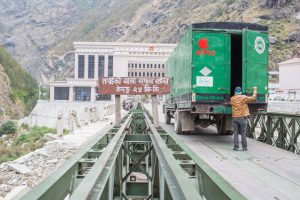

![A newly built water tank on top of the Srinagar Hill in Palpa, western Nepal [image by: Abhaya Raj Joshi]](https://dialogue.earth/content/uploads/2017/07/water-tank-in-Srinagar-300x172.jpg)
